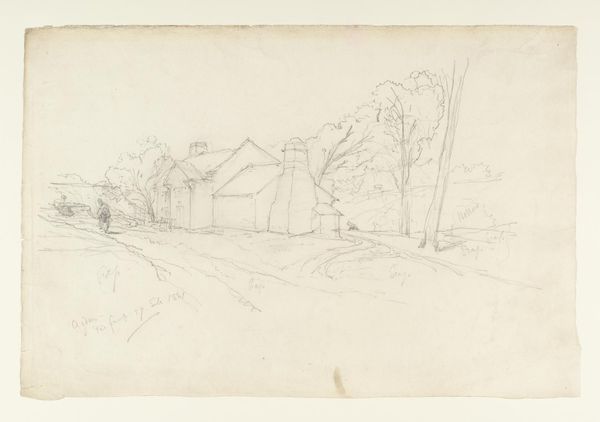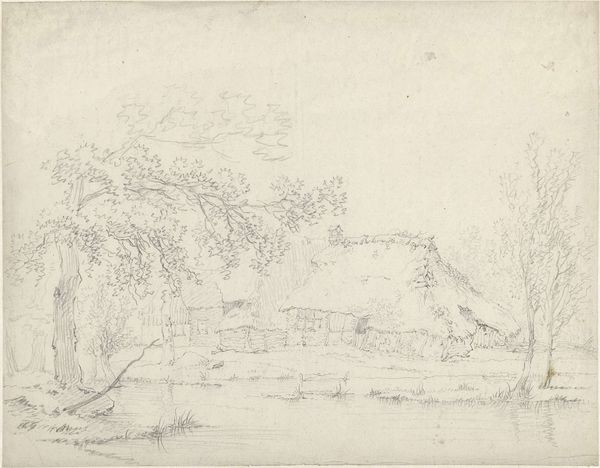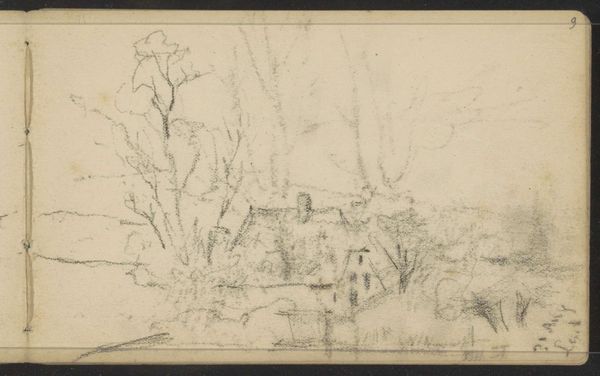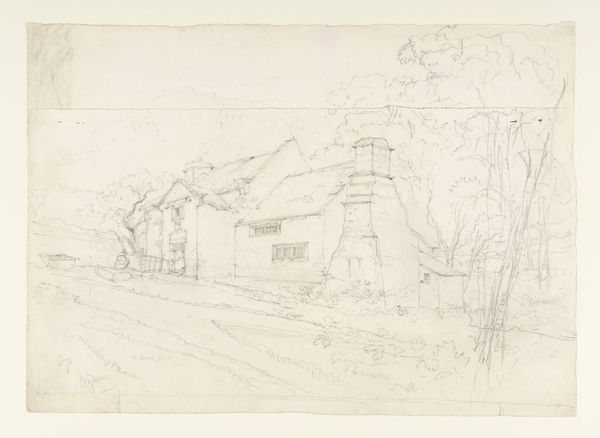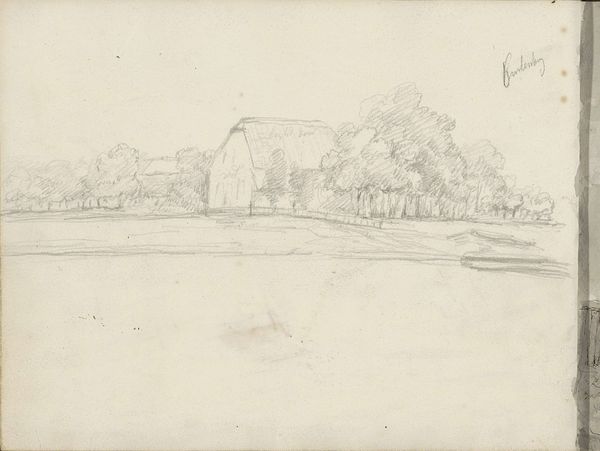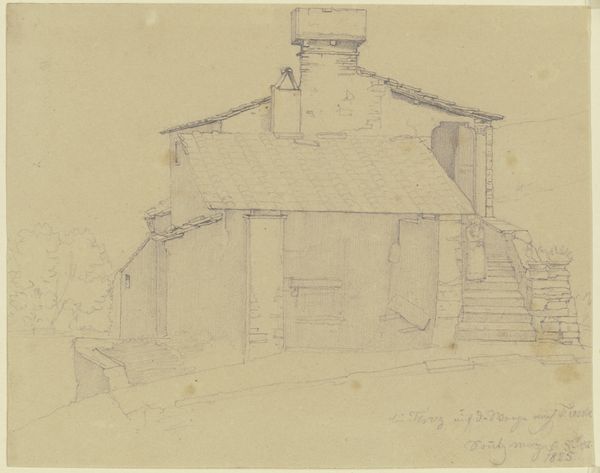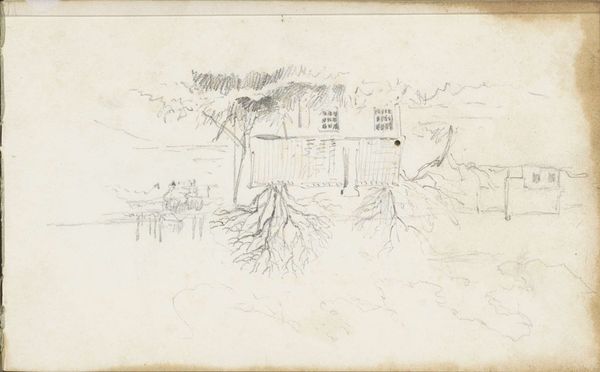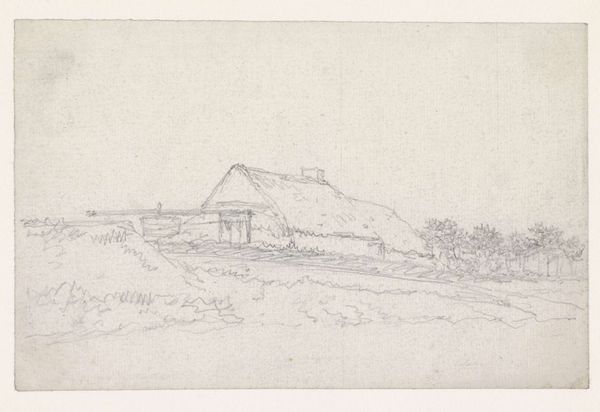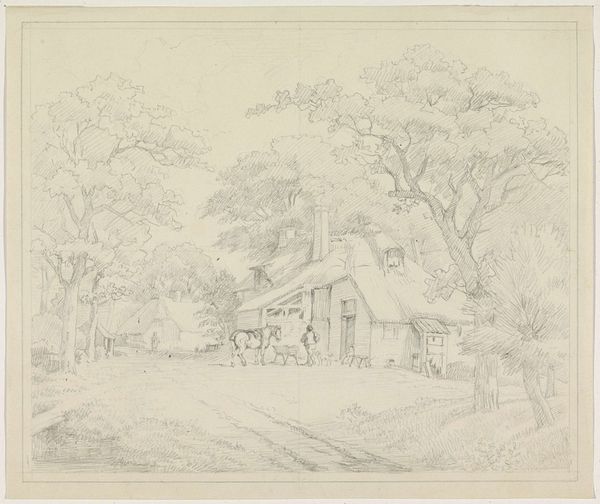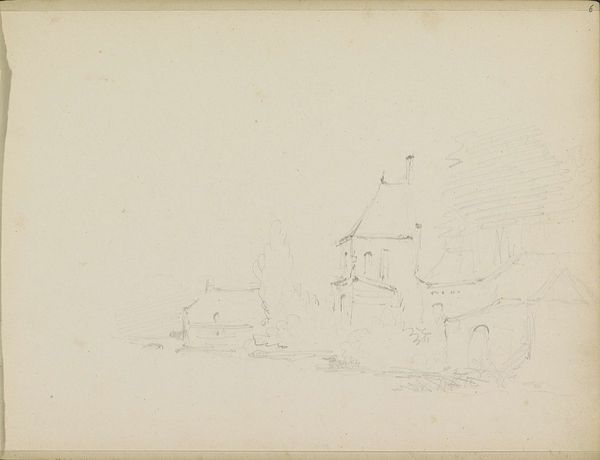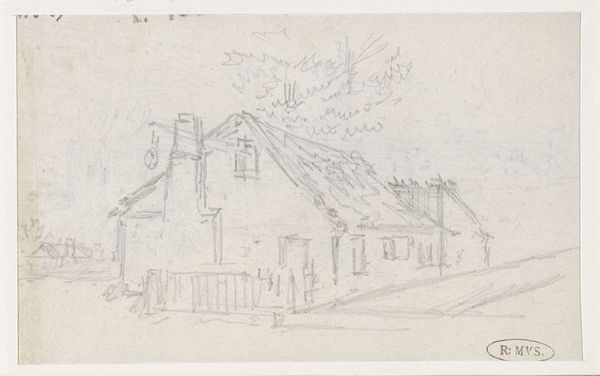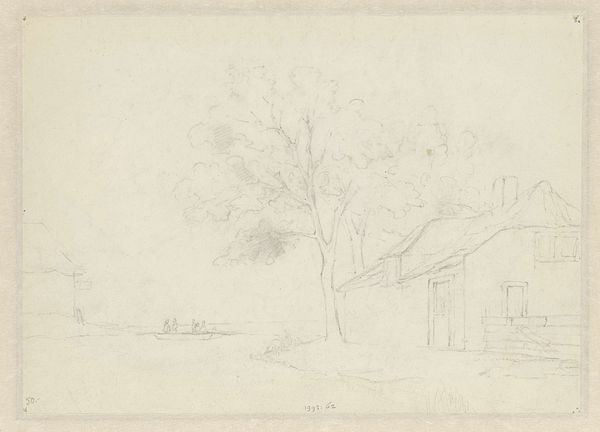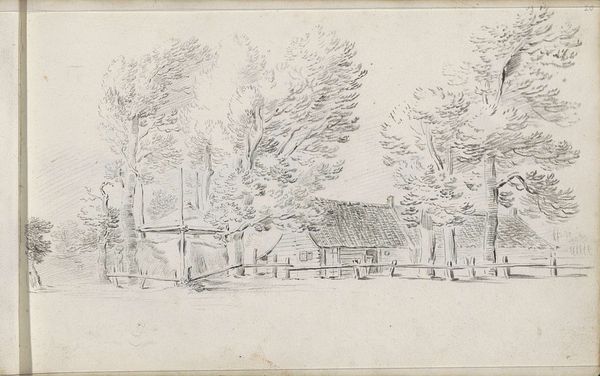
drawing, pencil
#
drawing
#
pencil sketch
#
landscape
#
etching
#
pencil
#
realism
Dimensions: height 285 mm, width 201 mm
Copyright: Rijks Museum: Open Domain
Curator: What a beautifully understated piece. This is “Schets van een watermolen,” or “Sketch of a Watermill,” created by Jozef Israëls. It is believed to have been made sometime between 1834 and 1911 and it's currently held here at the Rijksmuseum. The work is rendered in pencil, a technique that perfectly captures its ethereal quality. Editor: It feels like a whisper. Pale and unfinished, like a memory trying to surface. The mill is there, the wheel, the suggestion of surrounding foliage, but all so gently sketched. It has a haunting, almost melancholic mood. Curator: I think that reading is spot on. Israëls was, of course, a leading figure in the Hague School, and though we often associate that movement with painting, works like this on paper reveal the foundation of his evocative naturalism. He's laying bare his process for us. Editor: It also points to the economic realities. Finished oils were destined for wealthy patrons and galleries. But a pencil sketch? These were for personal study, a way for the artist to understand and capture the landscape, unburdened by expectations. So while many artists used drawings as a stepping stone, it could be seen as an artwork in its own right that offers glimpses into their inspiration. Curator: That’s a crucial point. While we might view it as a preliminary study, the very act of committing the image to paper, of finding beauty in a simple scene, is what the work celebrates. It highlights the intrinsic value of the working landscape, one shaped by the intersection of human labor and the natural world. And it speaks to a shift in artistic values during the 19th century, one moving toward democratization and authenticity. Editor: Absolutely. It asks us to slow down, to notice the poetry in the mundane. And for an artist like Israëls, depicting ordinary lives was anything but mundane; it was about imbuing those lives with a quiet dignity and humanity, capturing the true emotions of a moment. Curator: A testament to finding beauty in the unadorned. Editor: A quiet piece of history speaking volumes.
Comments
No comments
Be the first to comment and join the conversation on the ultimate creative platform.
